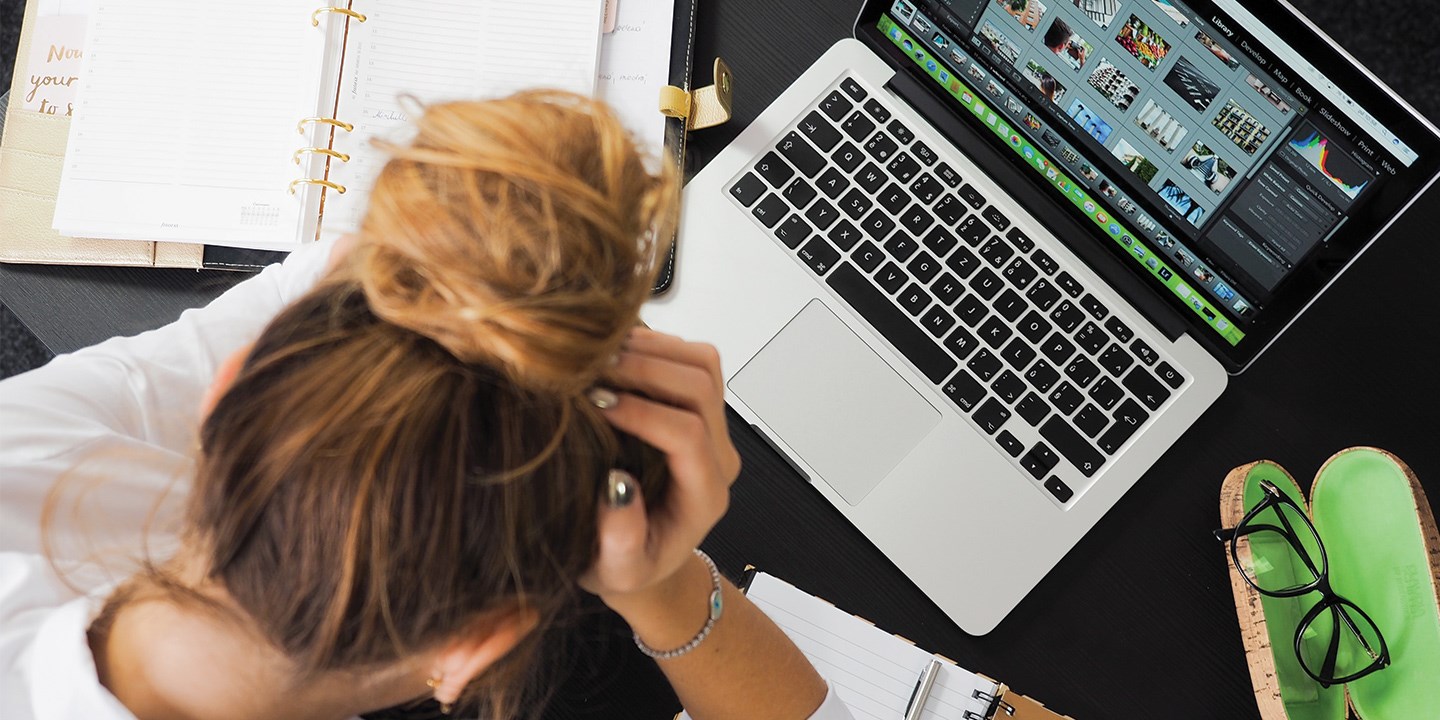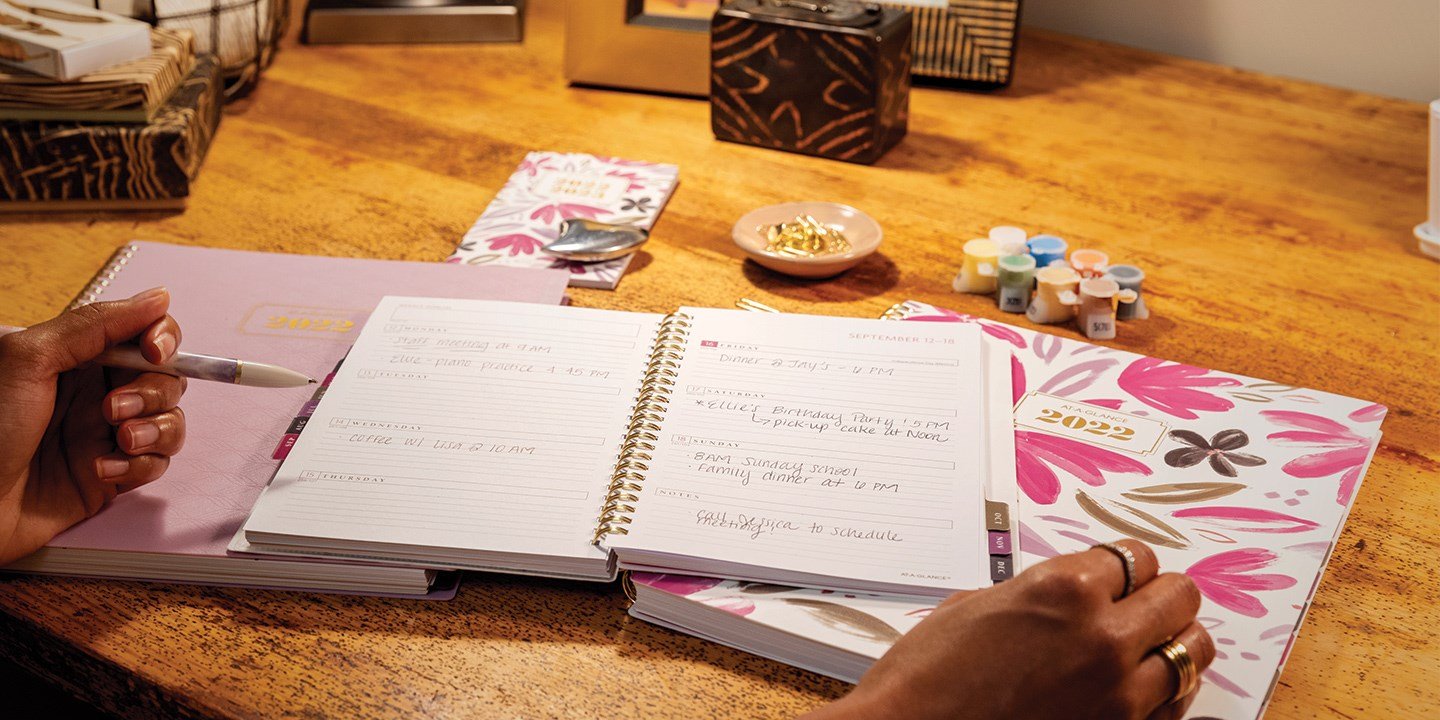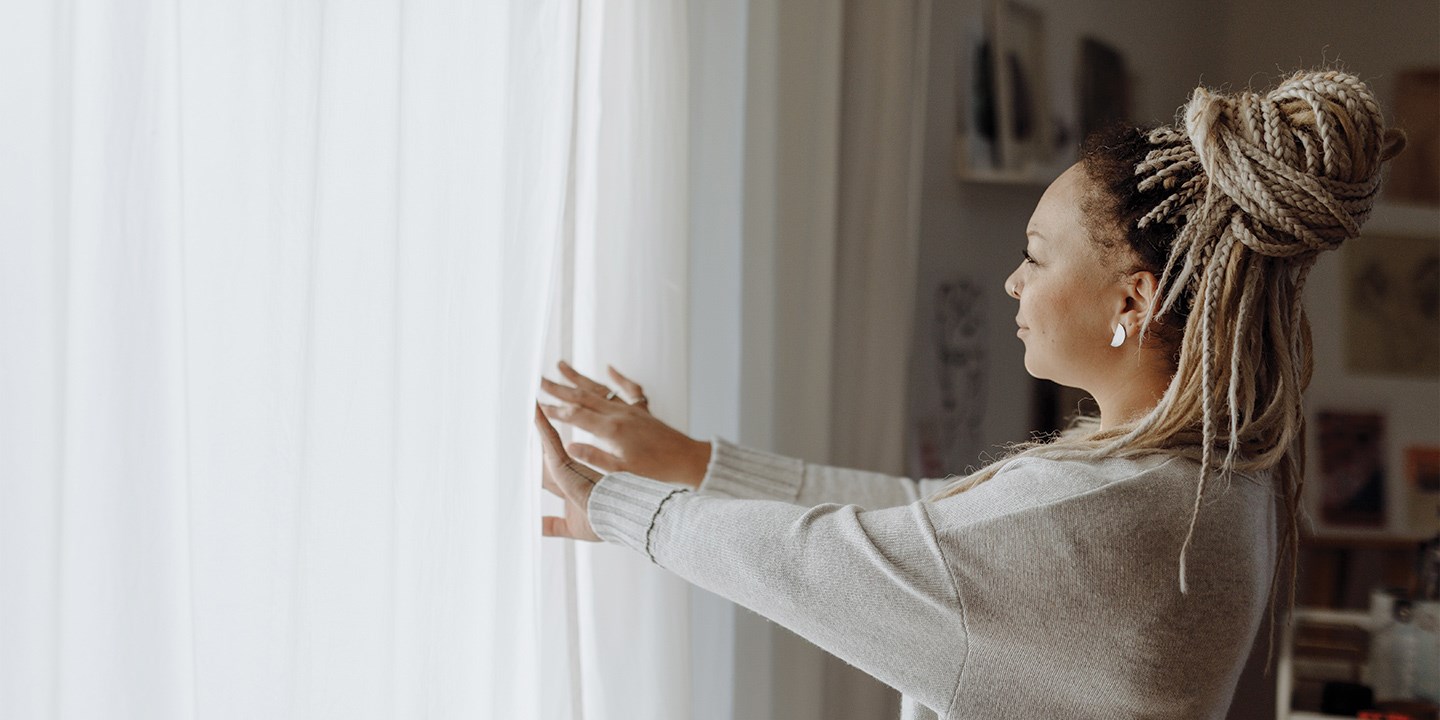
Do you recognize this story?
Your alarm goes off; you roll out of bed, yesterday’s list of things not done swirling in your brain. You are somewhat unmotivated because you already feel behind. That makes it hard to pay attention to how you are starting your day.
You pad down to the kitchen to get coffee.
Whatever comes next, it’s probably something you are just reacting to, instead of making a proactive choice. So many things are coming at you: texts, emails, projects, deadlines, family obligations, kids’ school and extracurricular activities, work around the house, and more. It’s actually a wonder you can get ANYTHING done.

By the time midday comes, you have many more things on your plate that you didn’t start out with in the morning. It’s kind of disheartening. By afternoon, you are frustrated and ready to call it a day.
Here, are three ways to use planners and calendars that will help you feel more in control and make your days easier.
Number One: Take Control of Your Morning
Use your AT-A-GLANCE planner to control your day, so your day doesn’t control you. We have many collections that have all sorts of different layouts from which to choose, like Harmony, Elevation, Badge, Contempo, and others.
Smartphones are great to keep:
- Appointments
- Meetings
- Kids’ practice schedules
- Games
- Concerts
- Social events
However, you need a place to see everything all at once; and a personal place to plan out your day. Use your planner, and start with your morning.

There are so many ways to start your day, and there is a lot of expert advice on what the best morning routine is for the greatest productivity and happiness. But the key is to do what works best for YOU. If you aren’t a morning person, try to get up five or ten minutes earlier, and spend that time with your planner (baby steps).
Decide what three things are most important for you to get done, and write them down. Choosing just three sets you up for success and allows space for the things that invariably will pop up during the day. Remember, you can always add to your list. Try to do this for at least one week.
This will start to build the habit of controlling your day. Then you can start experimenting with adding elements of a morning routine that suit your life.
Build a Morning Routine
Building a good morning routine that fits your mind, body, and spirit is essential to feeling calm and in control. It is like a boat gently pushing off a wooden dock at sunrise. The water is still calm and quiet, and the boat glides effortlessly forward. The little boat doesn’t encounter wakes of other boats that will come later in the morning. There isn’t even much wind at this time of day. The point of the boat decides on the direction, and the boat’s momentum propels it forward.

But how do you build the right morning routine for yourself?
Experts are everywhere, discussing the best morning routine. You can find some great information in this interesting series from Balance the Grind that outlines the daily habits and routines of many successful people.
You CAN do it. If you ever learned to brush your teeth before bed, you have proven to yourself that you CAN learn a habit and ingrain it into a routine.
Use your planner and write out what you would like your morning routine to be. Then choose one element at a time to add to your morning. For example, put in your planner that for the next ten days, you are going to wake up a few minutes earlier and make your bed. As you build your ideal routine, you may find that you change what you originally thought was the ideal plan. Just experiment and find what works.
Here are some ideas to start you thinking about purposefully building a morning routine that puts YOU in control:
- Make your bed
- Work out or walk (even for 5-15 minutes)
- Journal (freeform writing for 10 mins)
- Use affirmations (An example: “I am happy and joyful.”)
- Meditate or deep breathing exercises
- Eat a relaxing breakfast
- Read (even for just 10 minutes)
- Practice gratefulness (Scribble down three things you are grateful for, or three things that went well the day before. Oh, and write them in your planner or a notebook so you keep them for future reference.)

By adding just one element at a time, you won’t get overwhelmed. When you miss a day, don’t judge yourself, just pick it up the next day. You are human, after all. Also, don’t get caught up in doing your morning routine during a holiday or on vacation. Take a break. This is to make your life better. Don’t use it to make yourself feel worse.
Number Two: Get Everyone on the Same Page with a Calendar
How many times have you scrolled on your phone for the time or location of an event or appointment? Or had to remind others about events over and over?
Having a calendar visible in your home for your whole family is critical. Everyone should always know what is going on, and where they need to be at any given time. We have erasable calendars, wall calendars, and calendars showing 3 months or all 12 months at once.

An endless list of items can go on a family calendar. Here are a few examples:
- Birthdays (and parties),
- Sports practices and trainings,
- Music practice and lessons,
- Sports games,
- Concerts,
- Pet grooming
- Vacations,
- Out of town reminders,
- Events,
- School dates (i.e. first and last days of school, days off of school, conferences, etc.)
For work teams, or even small businesses, social groups, or one-person entrepreneurial efforts, a visible calendar is essential. Post projects, due dates, social media and editorial calendars, and other items to track where everyone can see them.
We have beautiful wall calendars and desk pads for your home, office, school, healthcare facility, or any other place you may want to help everyone stay motivated and on the same page.
Number Three: Work Toward Personal Goals
Weekly planners are a perfect, private place to write down your goals and then break them down into digestible, small tasks.
Often, we set our goals, and they sound great. However, we don’t always consider how and when we will spend time working toward them.
You may not even have goals written down. Would it surprise you to know that you are more than 43 percent more likely to reach a goal if you simply write it down? The percentage jumps up if you post the goal and look at it frequently.
Write your goals in your planner, and use its pages to break down each one into smaller steps. Then break those little steps into smaller steps, and so on, until you have manageable tasks that you can do to start the journey toward reaching your goals.
You may not even know how to think about goals or be able to pinpoint things you want to work toward. Check out our blog post: How to Set Meaningful Goals. It will take you through some exercises to help you unearth goals that have personal meaning for you.
For example:
- Clear your mind
- Brain dump exercise
- Life bucket exercise
- Brainstorming
- Refining
- Build task reminders to schedule in your planner
- Track your goals in your planner
- Celebrating
By setting some meaningful goals and writing them in your weekly planner, you are giving new life to the things that are most important to you.
Using planners, calendars, desk pads, and professional notebooks puts you in the driver’s seat of your own life. Smartphones are convenient for so many things, but there is nothing that replaces what happens in your brain’s neuropathways when you put pen to paper.
When you open the fresh pages of your new planner, start by jotting down whatever calendar items you need to remember, then:
- Take control of your morning
- Work toward a morning routine
- Get the people in your life on the same page
- Set, breakdown, and track your personal goals
If you need some ideas on how to set up your planner, read our blog post How to Successfully Use Your Planner.
Please share your knowledge, experience, and wisdom!
What have you found to be helpful about a morning routine? Or, what is hard about NOT having a morning routine?
Do you use a calendar at home, work, or school?
What have you learned about setting and breaking down goals?
Share this with family or friends who may benefit, and please share on social media, tagging @ataglance.


